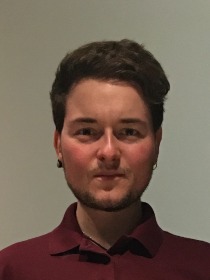N.D. (Nicholas) Aherne, MA

MARE - Mortuary Archaeology of the Roman East | University of Groningen (rug.nl) Over a period of five years (2021-2026), our team investigates how local communities envisioned and reformulated their relationships with the dead. We will build a digital infrastructure to enhance legacy and orphaned datasets from coastal Lebanon, Palmyra, and Pisidia, as well as to unlock inaccessible collections for wider audiences.
My PhD project (2022–2026) is titled 'Encoffined Bodies: on the Role of Sarcophagi in the Funerary Customs of Roman-period Phoenicia
In the second and third centuries AD the production and consumption of stone sarcophagi to memorialise the dead peaked in Phoenicia. This development marks a wider shift in funerary customs, whereby empire-wide trends appeared in the provinces, indicating a major transformation in how local communities conceptualised and acted in the funerary sphere. Thus far, scholarly focus on sarcophagi of Roman Phoenicia (present-day Lebanon) has predominantly been concerned with them as symbols of high status and culture, their artistic merit, and their position within broader imperial themes of identity and trade networks. Pre-existing approaches have generally been tailored to material from the centre of the Empire, i.e., Italy and mainland Greece.
My PhD investigates the function of the sarcophagi within their funerary customs and the ritual activity practiced by the mourning community. Consequently, it recontextualises the sarcophagi within their distinctly local context. Not only can this investigation shine light upon local customs, values, and beliefs, but also, the socio-cultural development of Roman Phoenicia in relation to the Roman Empire.
Disciplinary divides in the study of the funerary material of Roman Phoenicia have meant that data categories (epitaphs, decoration, osteological evidence, and objects) have not yet been studied in a comprehensive manner. To counter the challenges posed by the dataset’s legacy nature and such ontological boundaries I take a holistic approach. Thus, I seek to extend examine a sarcophagus through its multitude of material and visual components in order to reconstruct the lived ritual experience of local communities. A particular aim of mine is to reconcile artistic and archaeological approaches to Roman death and burial.
The central dataset comprises sarcophagi of stone, lead, terracotta, and wood from major urban sites along the coast of Phoenicia.
Some key research questions include:
-
What kinds of interactions did the sarcophagi enable for the living community?
-
How did the material and visual components (material, size, colour, decoration, text) of the sarcophagus interact with each other and the living?
-
How did the sarcophagi (re-)formulate relationships between the living and the dead?
-
How much were the sarcophagi and their decoration dictated by imperial trends vs. local demands?
-
What do the sarcophagi reflect about local customs, cultural values, and beliefs?
-
How do the interiors of the sarcophagi, their carving, skeletal remains, and grave goods reflect values of the dead and living? How does this compare to their represention through the exterior of the sarcophagi?
